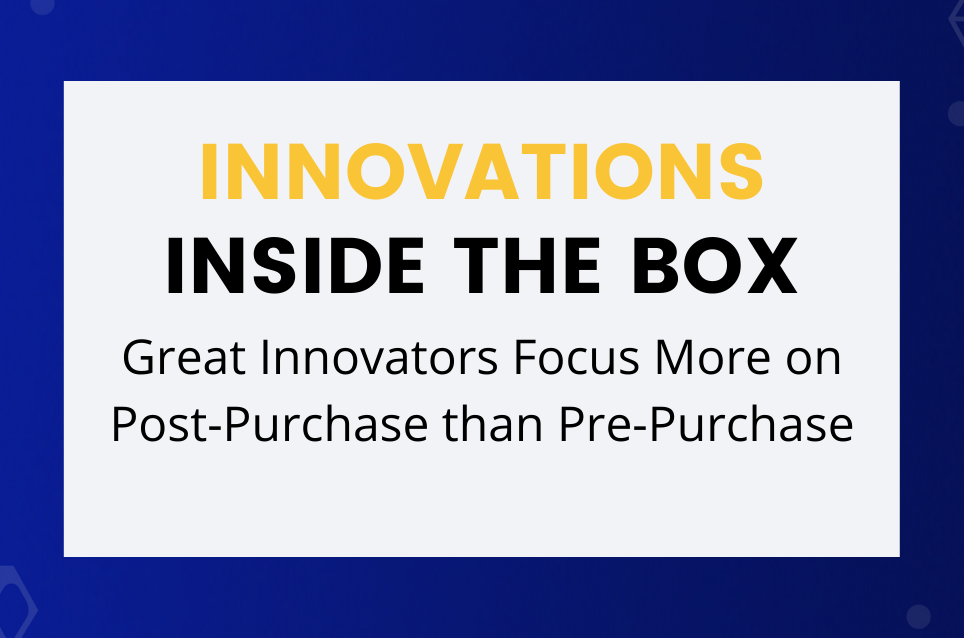What products or services have you purchased that are your absolute favorites? Can think of a few? My bet is that you can think of a few because those products did everything and more than what you expected. Your satisfaction after consuming those products is very high. That’s one reason why the last step of the buying process, the post-purchase phase, may be the most important in the study of consumer behavior. Let’s learn more reasons why and what you as the innovator can do about it.
First, think about what’s going on in the consumer’s mind at this point in the process. They were motivated to buy a product, they used all their skills and knowledge as a consumer to properly research it and do the purchase. They have a lot of time, money, and emotional commitment to this product. And now they’re home, and there’s the product, almost staring at them out of the shopping bag. Remember our discussion about risk? The consumer is thinking: did I do the right thing? Will this thing work the way I wanted it to work and will it be worth the money I paid for it? In other words, the consumer already has already formed a basis for evaluating the product’s performance. A yardstick so to speak.
When they actually use the product, three things can happen. The product works better than expected. It delivers additional benefits they didn’t know about or it delivers expected benefits better than they expected. If that happens, the consumer reaches a state we call “delighted.”
But if the product works in a way that exactly matches their expectations: no better and no worse. In that case, the consumer will be satisfied with the purchase.
Of course, we’ve all had the experience where the product or service performs lower than expected. Now there are two things that can happen here. One is the customer just accepts it as is. In this case, the product has reached a minimum level of performance to keep it, but just not what they were hoping for. Or, worst case, the consumer will be dissatisfied. It performs below even the minimum acceptable level.
Where a customer lands is critical to the innovator because it will affect whether they repurchase the product, whether they complain about the product, and how they give word of mouth advice to others about the product, positive or negative. You, as an innovator, have a role to play no matter where the consumer lands.
If customers are delighted or satisfied, consider doing the following. Congratulate them for making a great choice. People like being reminded what good consumers they are. Also, this is the time to take credit for delivering on the brand promise. This is also a good time to ask them for a testimonial or to post a positive comment on social media. And finally, make sure it’s easier for them to repurchase the product. Perhaps give them a special order line or a trial discount on future products.
If the customer is dissatisfied, try to find out why? Were their expectations too high because of some misinformation on your website? Did the product fail or did they use the product the wrong way? People will complain if two conditions are meant: they believe the problem was somebody else’s fault other than their own, and they believe the complaint will result in some action. People won’t waste their time otherwise.
Truth is you want complaints because that gives you as the innovator a chance to get in there, make it right, and salvage the relationship. The worst situation is they’re not totally satisfied, and they just disappear.
Great innovators pay the most attention to the post-purchase phase because after all, that’s the moment of truth on whether you’ve created and kept a customer.





